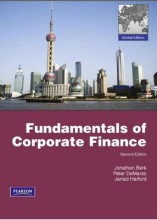Short-Term Economic Fluctuations - Planned aggregate expenditure
4 important questions on Short-Term Economic Fluctuations - Planned aggregate expenditure
In the Keynesian theory, output at each point is determined by the amount that people throughout the economy want to spend This total planned spending on final goods and services is called the planned aggregate expenditure (PAE). Four components sum to total/ aggregate spending:
- Consumer expenditure/consumption (C) by households
- Investment (I) by firms on new capital goods and inventories
- Governmental purchases (G)
- Net exports (NX) equals exports minus imports, which represents the net demand for domestic goods by foreigners
While many factors are relevant, a particularly important determinant of the amount people plan to consume is there after-tax, or disposable income. A consumption function is:
The marginal propensity to consume (MPC) or c, is:
- Higher grades + faster learning
- Never study anything twice
- 100% sure, 100% understanding
PAE can be divided into two parts:
- Autonomous expenditure: the portion of planned aggregate expenditure that is independent of output
- Induced expenditure: the portion of planned aggregate expenditure that depends on output Y
The question on the page originate from the summary of the following study material:
- A unique study and practice tool
- Never study anything twice again
- Get the grades you hope for
- 100% sure, 100% understanding
































